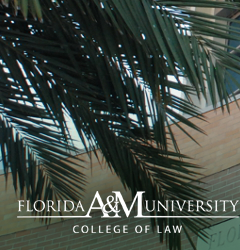Document Type
Article
Publication Date
1998
Abstract
The tension between the two principles set out above is an unresolved dilemma for the United States Supreme Court. On the one hand, not every fact relevant to sentencing a criminal defendant warrants the Constitution's full criminal procedure protections. On the other hand, if those protections apply only to the facts selected by the legislature to determine guilt or innocence, the sentencing proceeding may overwhelm the trial in importance because the sentencing facts will determine the defendant's fate to a far greater extent. Justice Scalia described this tension bluntly: Suppose that a State repealed all of the violent crimes in its criminal code and replaced them with only one offense, "knowingly causing injury to another," bearing a penalty of 30 days in prison, but subject to a series of "sentencing enhancements" authorizing additional punishment up to life imprisonment or death on the basis of various levels of mens rea, severity of injury, and other surrounding circumstances. Could the state then grant the defendant a jury trial, with requirement of proof beyond a reasonable doubt, solely on the question whether he "knowingly caused injury to another," but leave it for the judge to determine by a preponderance of the evidence whether the defendant acted intentionally or accidentally, whether he had used a deadly weapon, and whether the victim ultimately died from the injury the defendant inflicted? 3 How does the Constitution resolve this tension? The decisions of the Court have yet to provide an answer. The cases have, however, set out the basic framework for analyzing the constitutional question. The Court has called certain facts the "elements" of a criminal offense. Elements require all of the Constitution's procedural protections, particularly the government's beyond a reasonable doubt burden of proof and trial by jury. The Court considers other facts to be "sentencing factors." Sentencing factors are factual determinations that do not affect the defendant's guilt or innocence, but only the severity of the sentence imposed. The presence of a sentencing factor could increase or decrease the sentence, or affect it in another way, such as by triggering a mandatory minimum sentence. The Constitution's strict procedures for elements of the offense do not apply, by definition, to sentencing factors, which may be determined, for example, by a preponderance of the evidence or by the judge alone. We would expect the Court normally to defer to the legislature on whether a given factual determination is an element of the offense or a sentencing factor for the offense. The question that the tension illustrated by Justice Scalia's hypothetical raises, however, is whether the Constitution ever places a limit on the legislature's power to define a factual determination as an element or as a sentencing factor. Can a fact have such importance that it constitutionally must be considered "necessary" to the crime, rather than merely relating to the "severity" of the punishment? The Court's dilemma is that the constitutional answer is unclear, and the possibility of abuse by the legislature is real. In Jones v. United States, a case argued in the 1998 Term, the Court had the opportunity to confront and resolve the elements/sentencing factors constitutional question. With this recent constitutional issue, this note supplements a long history of articles on criminal law, procedure, and sentencing in Law and Contemporary Problems. The note argues that the Constitution does restrict the power of the legislature by requiring that certain facts be proved as elements of the offense. Part II reviews the historical evolution of the elements/sentencing factors constitutional question. Part III describes seven proposed tests the Court might adopt as solutions to the constitutional dilemma. Part IV turns to the text of the Constitution itself, particularly the provisions relating to trials for "crimes." Part V evaluates the proposed constitutional tests to determine which provides the best definition of a "crime" in the text as a matter of constitutional interpretation. Part VI describes the Court's missed opportunity in Jones to adopt the test proposed by Justice Scalia, which defines a "crime" for this constitutional purpose as the factual findings used to determine the defendant's maximum possible sentence. The note concludes that this test is the rule the Court should adopt for resolving the elements/sentencing factors constitutional question. I
Recommended Citation
Benjamin J. Priester, Sentenced for a Crime the Government Did Not Prove: Jones v. United States and the Constitutional Limitations on Factfinding by Sentencing Factors Rather than Elements of the Offense, 61 LAW & CONTEMP. PROBS. 249 (1998).
